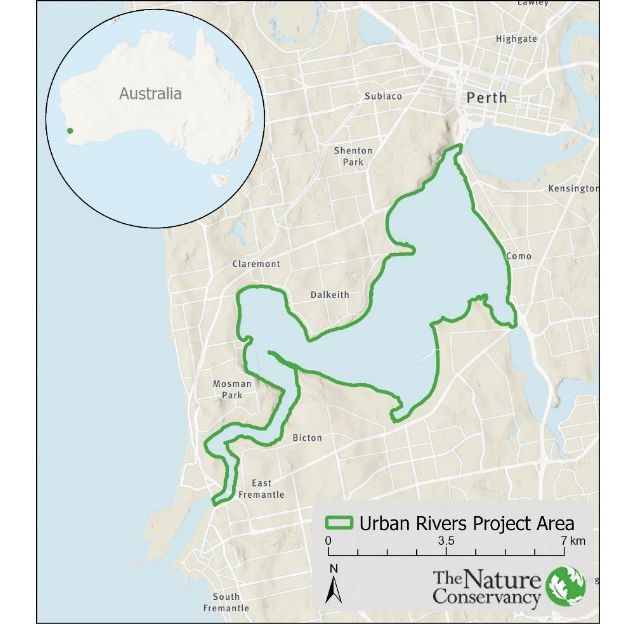The Swan Canning Estuary is central to Perth, where its two rivers meet and flow towards the ocean at Fremantle. The Swan River, also known as the Derbarl Yerrigan, holds profound spiritual and mythological importance for the Noongar people, the Traditional Owners of south-west Western Australia. For thousands of years, this region has been crucial for providing food, water, transportation, and recreational opportunities.
The estuary is home to a diverse array of wildlife, including many species of fish, birds, and small mammals, making it a vital ecological habitat.

The history of the Swan Canning Foreshore
The Swan Canning foreshore has a rich history, deeply intertwined with the lives of the Noongar people. Historically, the foreshore was a vibrant ecosystem, characterised by extensive wetlands, lush vegetation, and abundant wildlife. The rivers provided essential resources such as food, water, and materials for shelter and tools. However, with the arrival of European settlers in the 19th century, the landscape began to rapidly change. Urban development, agriculture, and industrial activities led to the alteration and fragmentation of natural habitats, impacting both terrestrial and aquatic biodiversity.
Major changes occurred in the early 1900s, with the removal of the limestone bar at Fremantle and subsequent impoundment of tributaries for water resources. This, as well as Perth’s declining rainfall, turned the estuary from a fresh-brackish system into a more marine environment. The modification also disrupted natural sediment flow which enhanced erosion in areas along the estuary and contributed to a loss of fringing vegetation. Erosion has been further exacerbated by boat wakes and modern infrastructure construction within the estuary, such as jetties and bridges, which can also disrupt sediment flow and further destabilise areas of foreshore.

What is the problem that we are trying to solve?
The historical removal of natural habitats, and the growth of our built environment around the Swan Canning Estuary has resulted in a highly modified riverbed and foreshore. Further to this, managing erosion risk has been tackled in many places by traditional engineering solutions such as revetment walls. This has resulted in localised loss of foreshore reserves and contributed to habitats loss. As climate change leads to rising water levels, the pressure of erosion on infrastructure and natural assets will increase. While traditional engineering solutions will be necessary in some cases, innovative approaches are essential to preserve the resilience and values of non-built shorelines. These efforts will benefit both native species and people, ensuring a sustainable future.
Delivering nature-based solutions for remediating Swan Canning Estuary Foreshores
In partnership with the Department of Biodiversity, Conservation and Attractions (DBCA), the University of Western Australia (UWA) and Whadjuk Aboriginal Corporation, The Nature Conservancy is delivering the Nature-Based Solutions for Remediating Swan Canning Estuary Foreshores Project. This innovative on-ground solution aims to mitigate foreshore erosion risk, enhance natural habitats, and improve public access and recreational enjoyment of the foreshore environment. This foreshore remediation project is a pivotal initiative that benefits both nature and people around the estuary, showcasing the critical role of nature-based solutions.
Nature-based solutions protect, sustainably manage, and restore ecosystems, providing benefits to human well-being and biodiversity. By identifying at-risk areas of the Swan Canning Estuary, under predicated future climate regimes, the project will implement solutions to improve foreshore management options. Co-designed with partners, these solutions will address erosion, enhance habitats for native species, foster environmental stewardship, and increase resilience to climate change risks.
This project builds upon the success of our current work in the Swan Canning, which you can read about here: Swan Shellfish Restoration Project.

The project area focuses on the Lower Swan Canning Estuary, specifically the foreshore reserves and shallow nearshore environments of Melville Water, upstream of Fremantle Port and downstream of the Narrows and Canning Bridges.
Partners
This project is funded by the Australian Government’s Urban Rivers and Catchments Program, led by The Nature Conservancy and in partnership with the Department of Biodiversity, Conservation and Attractions (DBCA), the University of Western Australia (UWA) and Whadjuk Aboriginal Corporation.

